Ohio Invertebrates
Here are some Ohio invertebrate photos that I have taken over the years.
Most of these are a byproduct of my searches from reptiles and ampibians.
I dotry to take a photos of anything interest that I come across.
In the early 2000s, my son Ryan
was very into butterflies, crayfish, etc... so I did take more pictures
in that timeframe. I also see that I had an inexplicable lull in the
late 2000s...
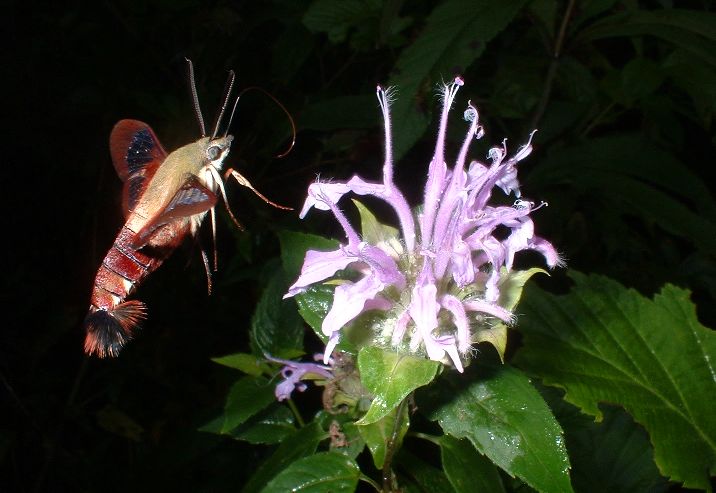
A Hummingbird Moth seen in our garden. I believe this is the
Hummingbird Clearwing (Hemaris thysbe). August 2002.
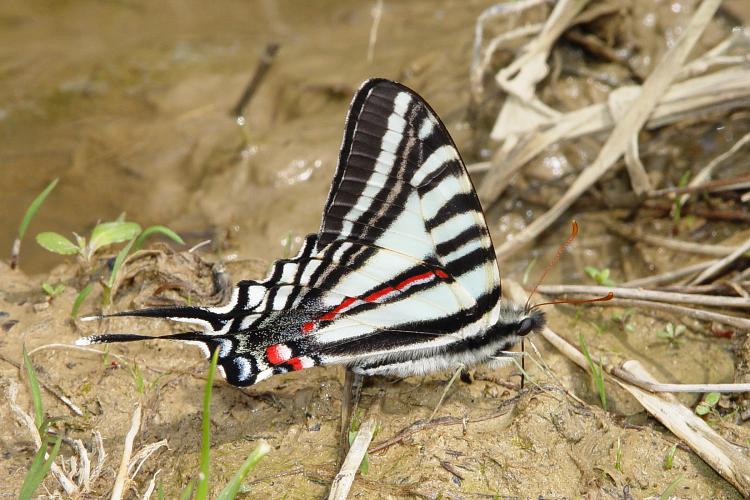
Zebra Swallowtail (Protographium marcellus). April 2003.
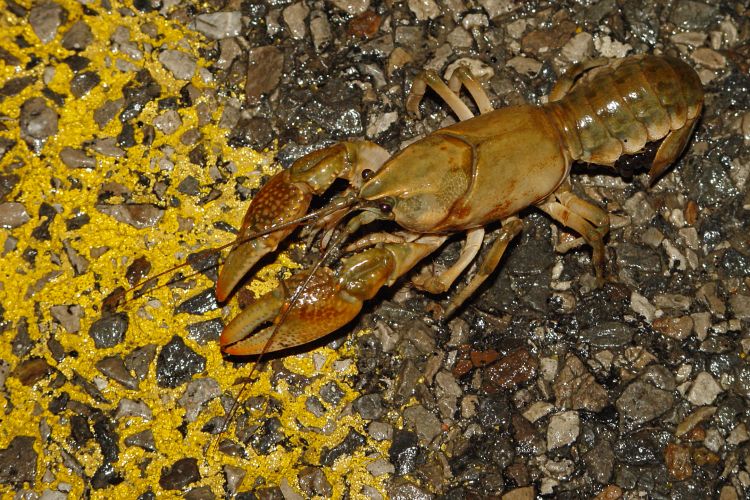
A large crayfish seen crossing a road on a rainy night. May 2003.
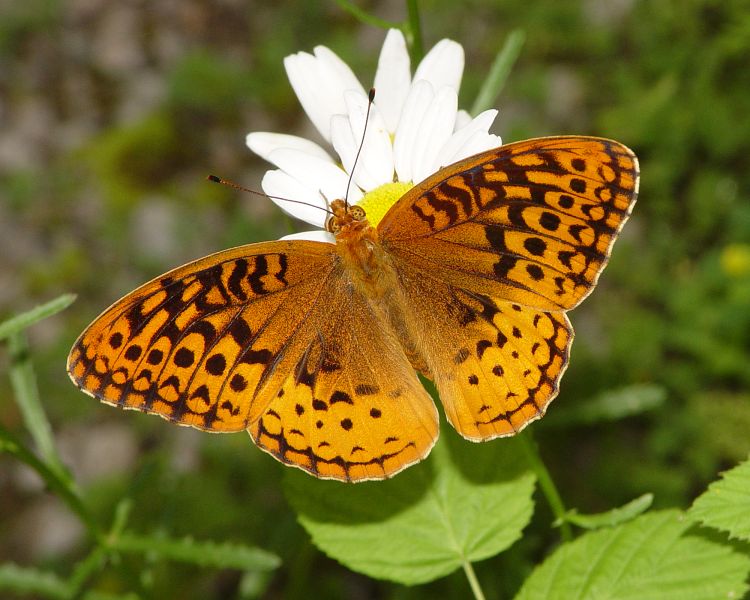
Great Spangled Fritillary (Speyeria cybele). June 2003.
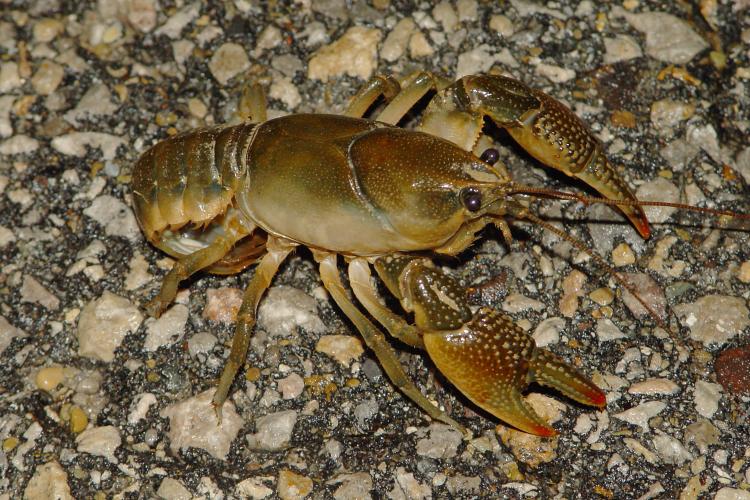
Another large crayfish out and about on a rainy night. March 2004.
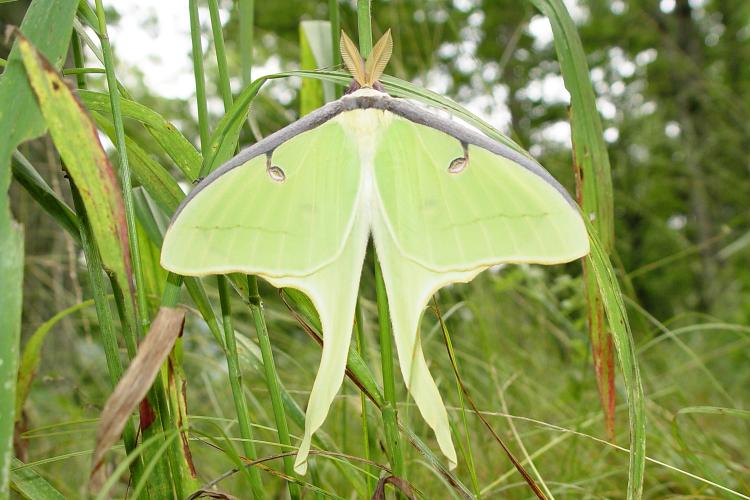
Luna moth (Actias luna). June 2004.
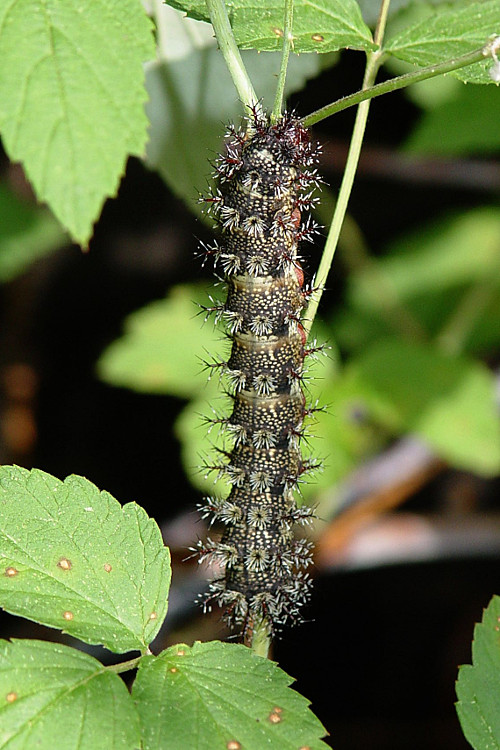
I believe this is a Buck Moth (Hemileuca maia) caterpillar.
June 2004.
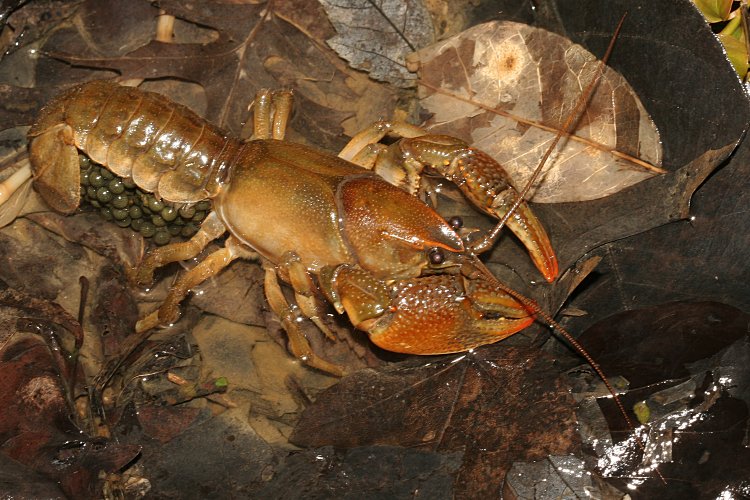
An interesting large crayfish, with eggs under its tail. March 2010.
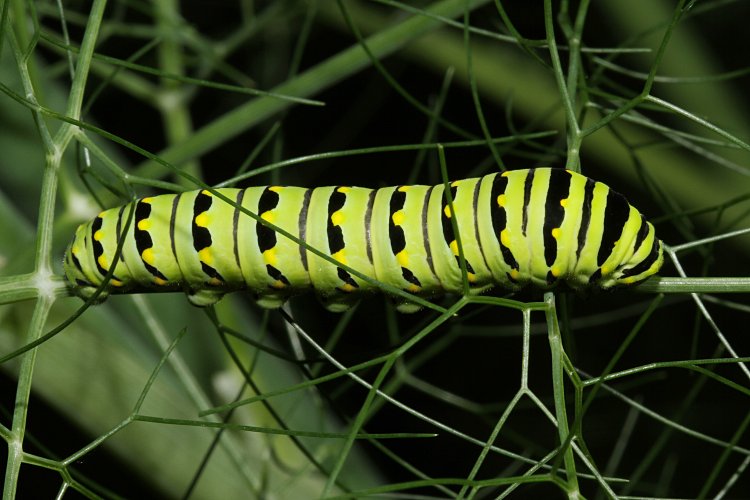
A Black Swallowtail (Papilio polyxenes) caterpillar found devouring
Roxanne's fennel plant. June 2011.
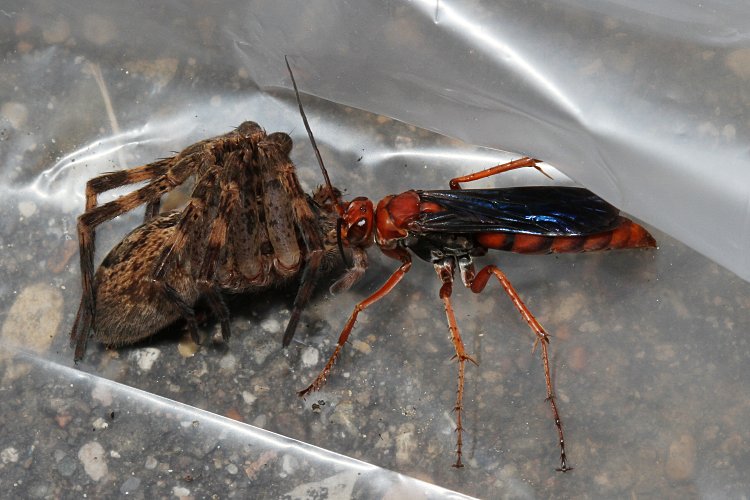
A Spider Wasp (family Pompilidae) doing it's thing in our driveway.
It was having some trouble dragging its victim over the folds of the plastic
drop cloth (we were doing some painting).
I gave it some assistance, which
it seemed to appreciate. I followed it for a while. The wasp would pause
periodically to do some reconnaissance and then get back to work.
It was very purposeful. Unfortunately, I lacked the patience to
follow the process to its end. August 2011.
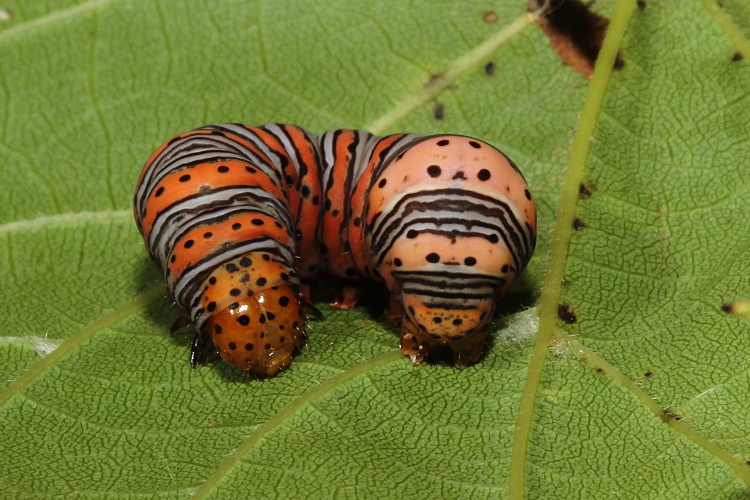
A Wood Nymph (Eudryas) caterpillar found in some grape vines in
our backyard.
Perhaps the Beautiful Wood Nymph (E. grata).
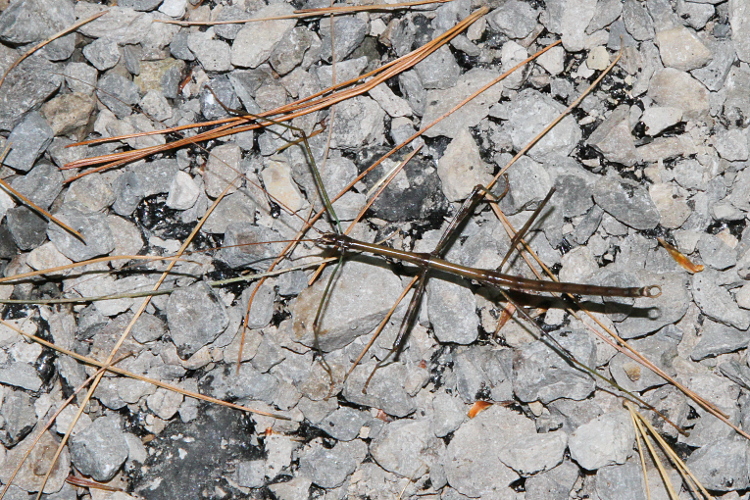
A Walking Stick insect. In my experience, these are most common to see in
the later summer. This individual was seen on 14 September 2013.
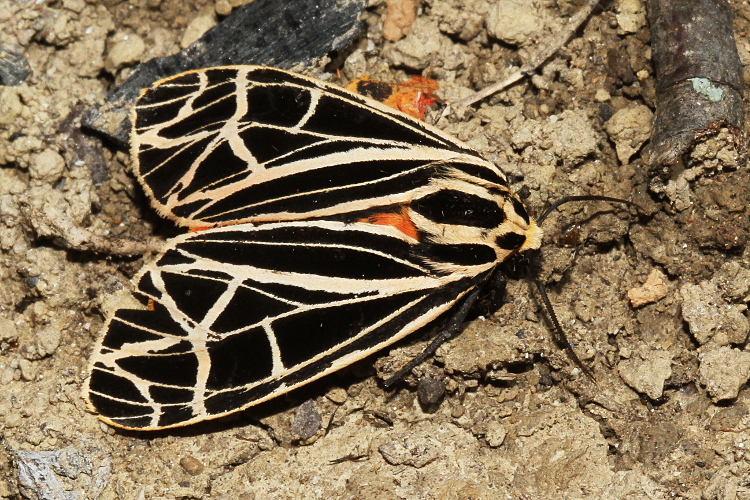
Banded Tiger Moth (Apantesis vittata) that I spotted on the ground
while photographing a pair of Red-bellied Snakes. The moth never budged.
Apparently the larvae of this species are the “Wooly Bear”
caterpillars that are commonly seen around here. September 2013.
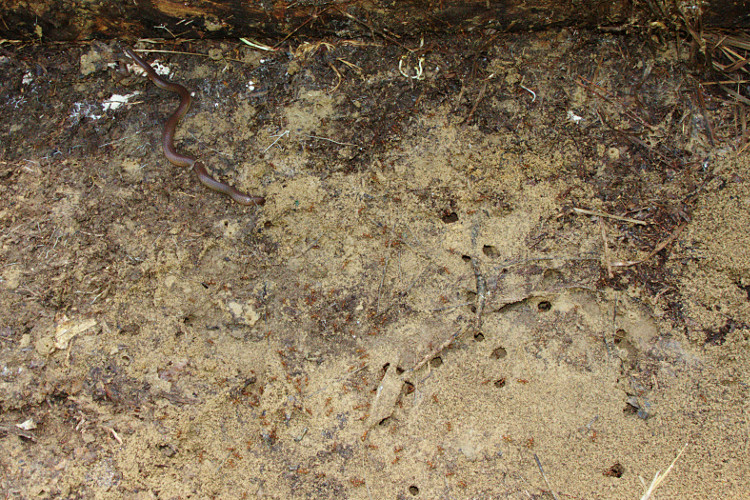
A large Worm Snake (Carphophis amoenus), as found in an ant
nest under a board. It was further down the ants' hole when I first saw it.
I have often wondered if this snake species predates on ant pupae. It
seems their strongly overlapping scales and tiny eyes would give them
some protection from ant stings. May 2014.
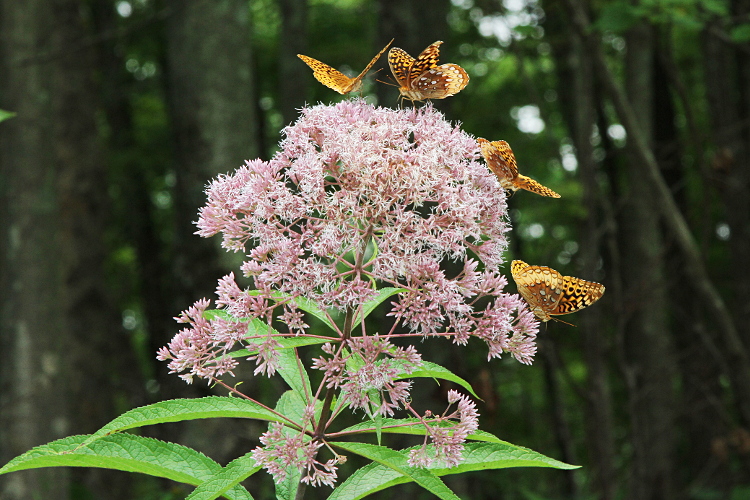
Great Spangled Fritillaries (Speyeria cybele) on
Joe-Pye Weed (Eupatorium). August 2014.
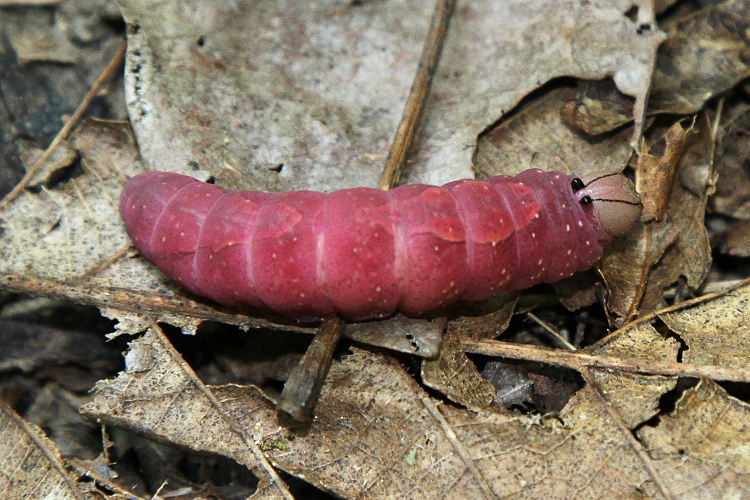
I found this interesting caterpillar crawling in the leaf litter.
It turns out it is a White-blotched Hetrocampa (Heterocampa umbrata).
September 2015.
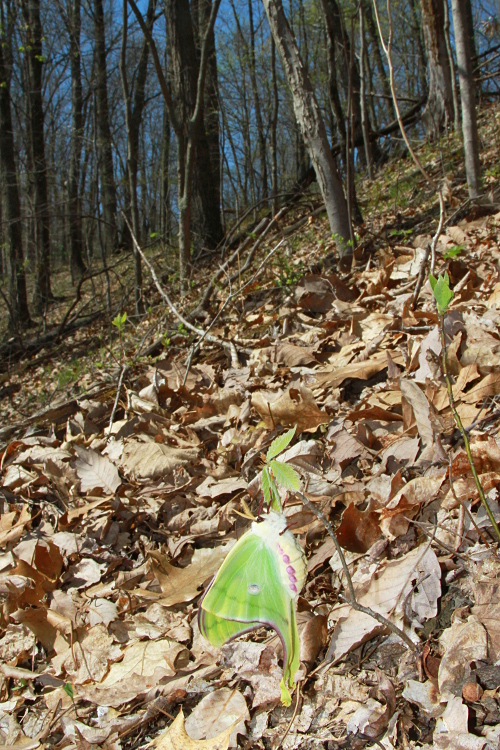
A Luna Moth (Actias luna), shown as found. I suspect that it had
just emerged from its cocoon and crawled up on this baby tree to fill its
wings and wait for nightfall. Apparently they overwinter in their cocoon
in the leaf litter. Very symbolic of spring! April 2016.
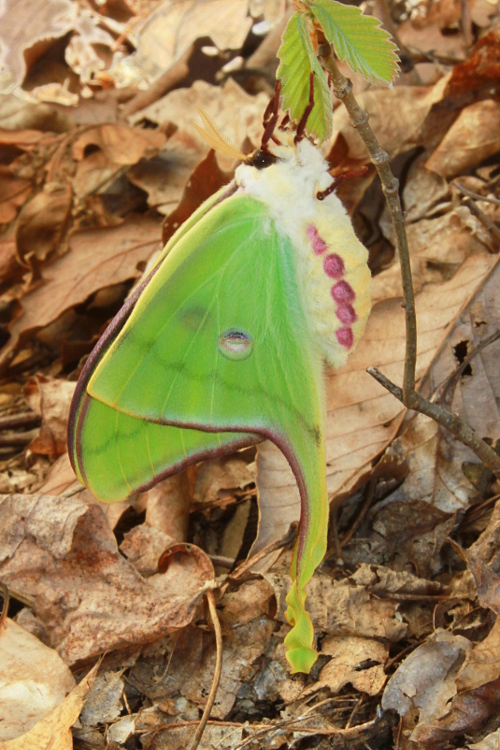
A closer look at the Luna Moth. It's interesting that it has its wings in
the closed position, which is not the usual posture for moths. I suspect
this is because it just filled its wings -- maybe it is still in the process.

In the spring of 2016 this region experienced an emergence of periodical
cicadas. They were a 17-year variety, “Brood V”
(Magicicada sp.).
The grubs (technically the final instar stage) were staging just below
the surface in mid April. Many were seen under rock slabs.
Hard to believe this guy is almost 17 years old. April 2016.
In late May and early June, the 17-year periodical cicadas emerged
in southeast Ohio.
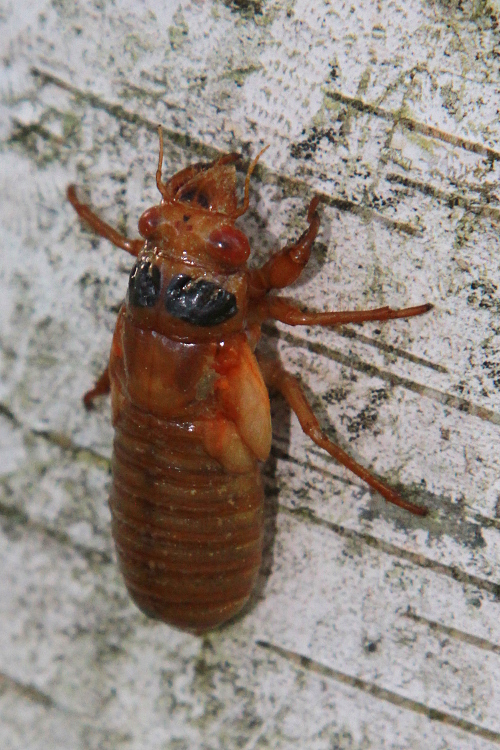
They crawl out of the ground as grubs, the final instar stage.
They are about an inch long. They climb up trees and other vegetation.
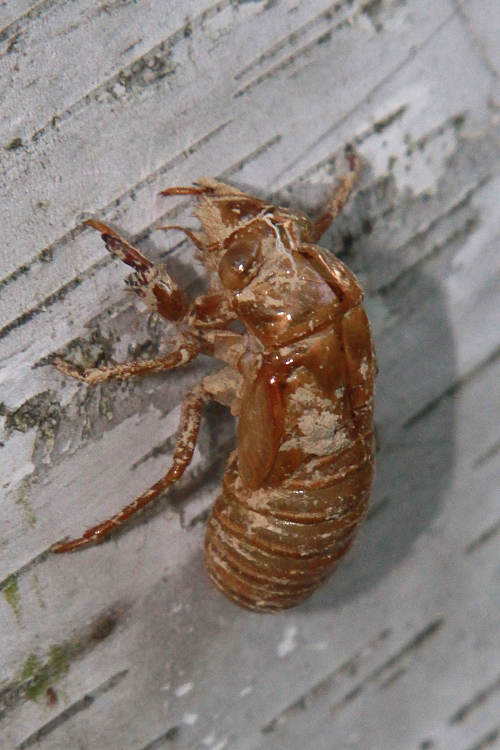
At some point they stop and crawl out of their shell. This is what a
shell looks like after the adult cicada has left. Note the split where it
crawled out.
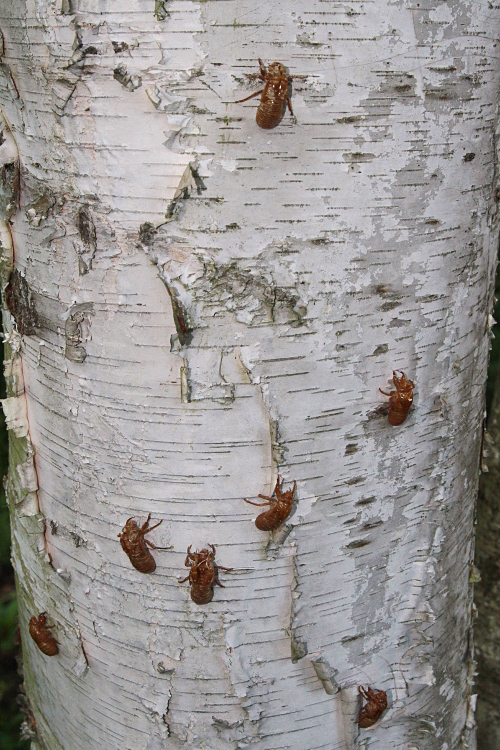
There are a lot of left over shells.
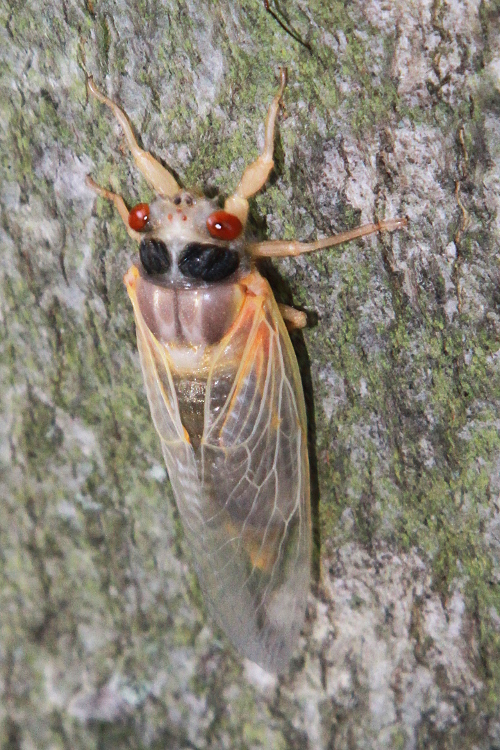
When they first come out they are a light color.
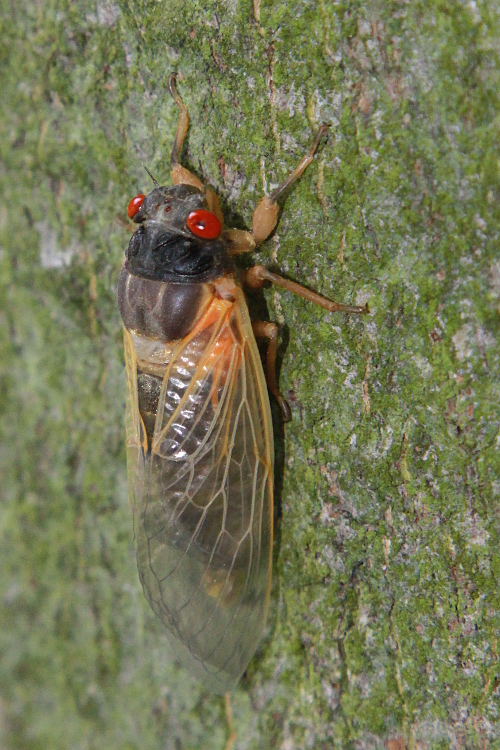
They quickly get darker.
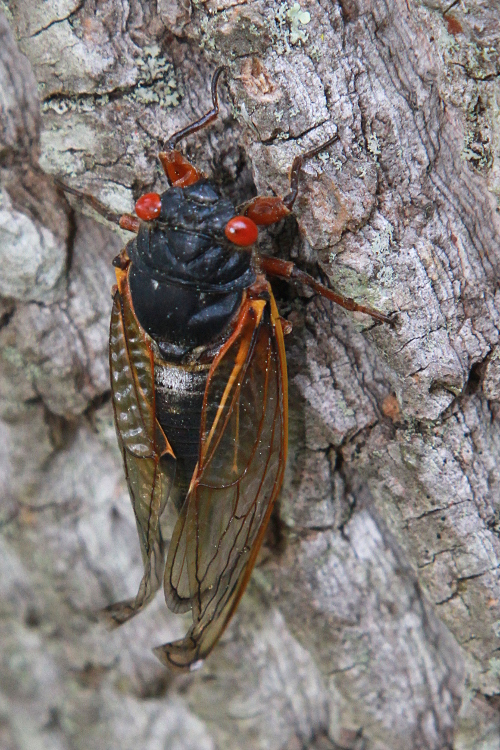
An adult cicada, ready to breed and repeat the cycle.
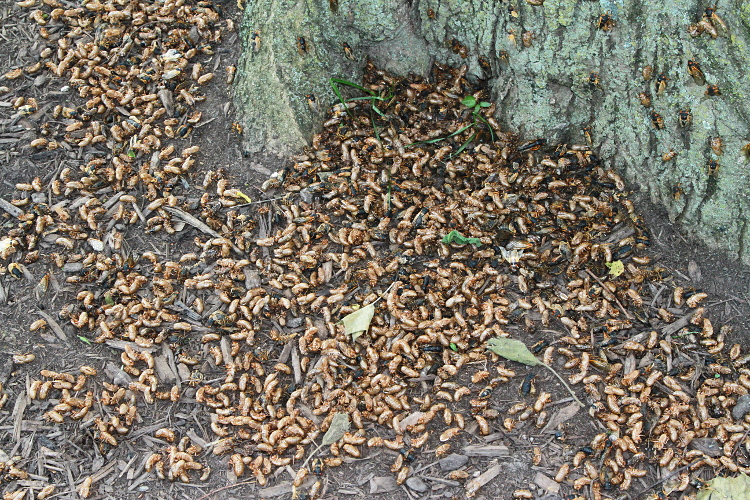
Did I mention there a lot of left over shells?
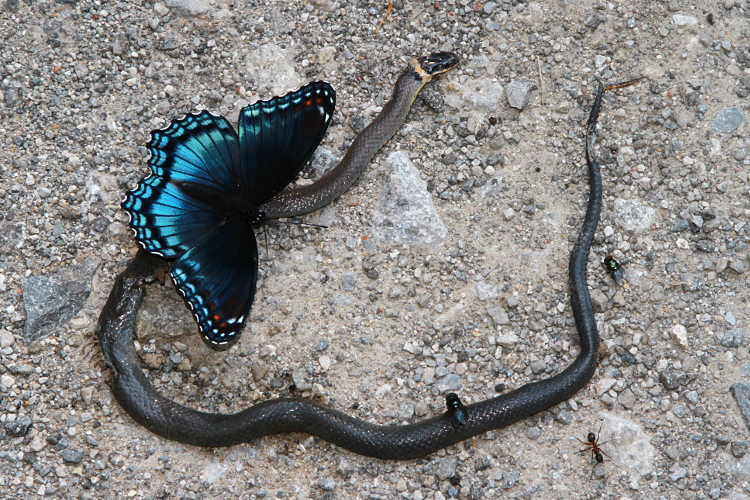
Red-spotted Purple (Limenitis arthemis) taking sustenance from an
unfortunate Ring-necked Snake (Diadophis punctatus) that had been run
over on a dirt road. August 2016.
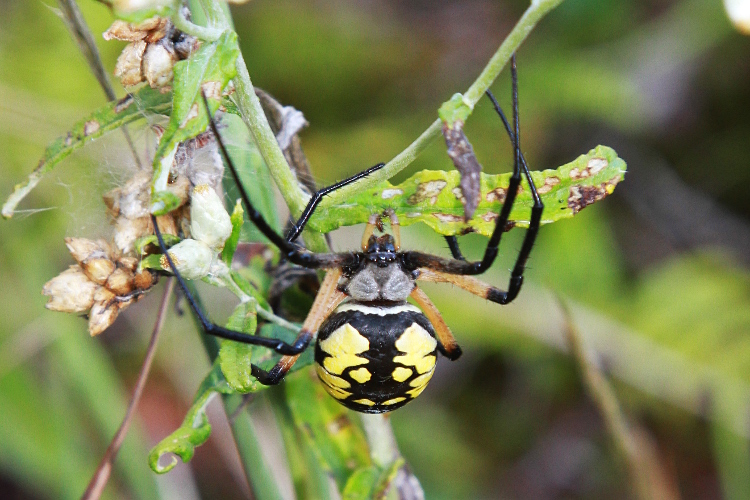
An annoyance of hiking in the late summer and early fall is huge number of
spider webs that one winds up walking through. I am not afraid of spiders --
in fact I like and appreciate them. But constantly cleaning web off of your
face and arms gets old. Using a snake hook to clear out the webs as you go
is helpful but only goes so far. I found this rather large spider crawling
on my arm one day. It is a Zipper Spider aka Black and Yellow Garden Spider
aka Argiope aurantia. September 2016.

A carrion (burying) beetle that I found. I found several of them in
a pipe where a small mammal had apparently become trapped and died.
Those who know better than I tell
me that it is Nicrophorus sayi. Interesting critter. There is a
similar species, the American Burying Beetle, that is very endangered.
April 2017.

A Bold Jumper Spider (Phidippus audax) dragging a tent caterpillar.
This was found by Rox in the garden. Considering this and their
jumping ability, these spiders are pretty much superheros!
April 2017.
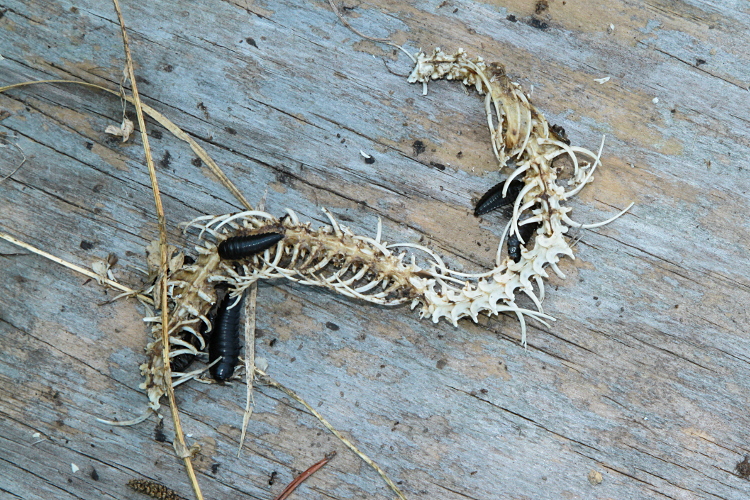
Ashes to ashes and dust to dust. Some snake bones I found on top of
a board. And some carrion beetle larvae of some sort. Kinda wonder what
went down here... July 2017.
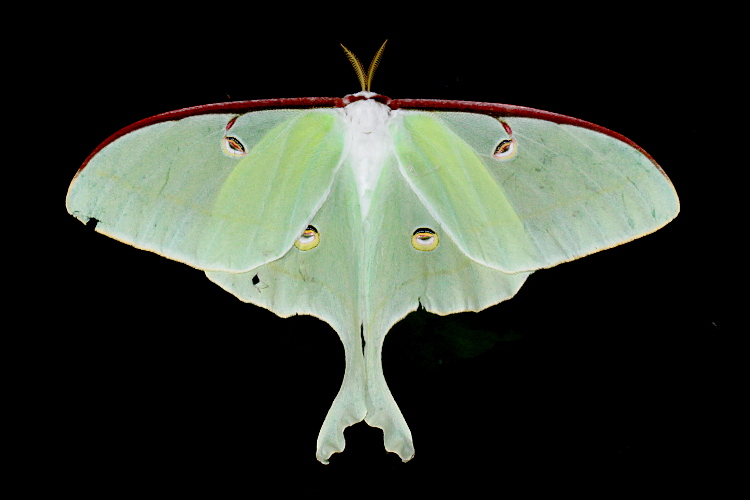
A Luna Moth (Actias luna) hanging out on our window one evening.
They are really impressive. It's got a wingspan of about 5”.
August 2017.

One of two Black Widow spiders found under some rocks. August 2017.
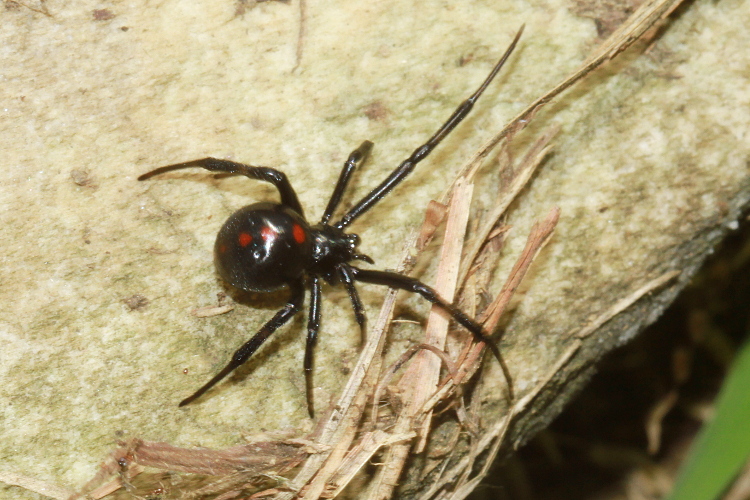
The other Black Widow. I do not see these often but they
“are around” in southeast Ohio.
I also saw one in a woodpile at our house this year.
Where I grew up in the California desert, you could find dozens of
them if you walked around the outside of buildings with a flashlight at night.
Augst 2017.
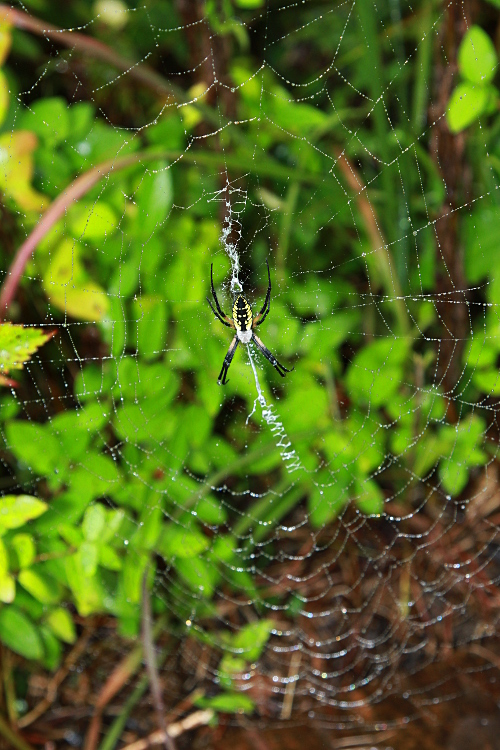
A Zipper Spider aka Black and Yellow Garden Spider aka
Argiope aurantia. September 2017.
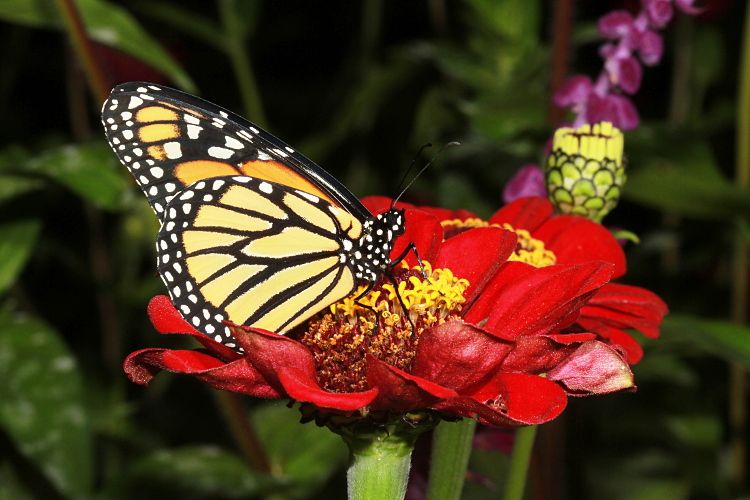
Rox collected a few mature monarch caterpillars and let them finish
that stage of life in captivity. We let this one go one morning after
it had emerged from its chrysalis overnight. October 2017.
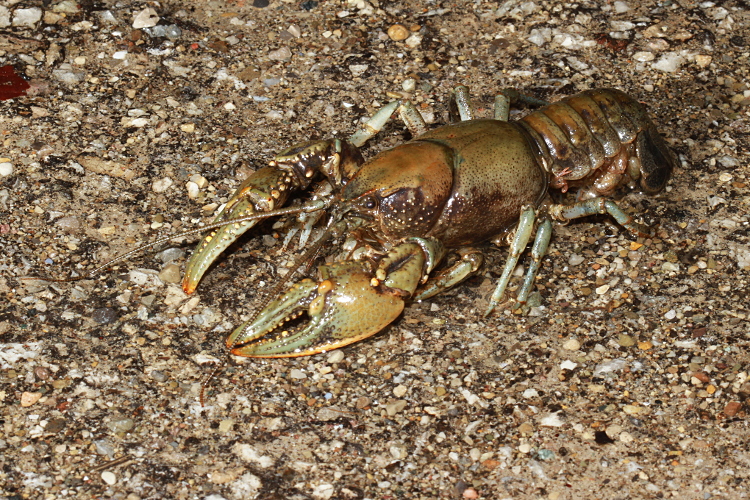
A large crayfish (Cambarus bartonii cavatus) seen crossing the road
on a rainy night in the early spring. February 2018.
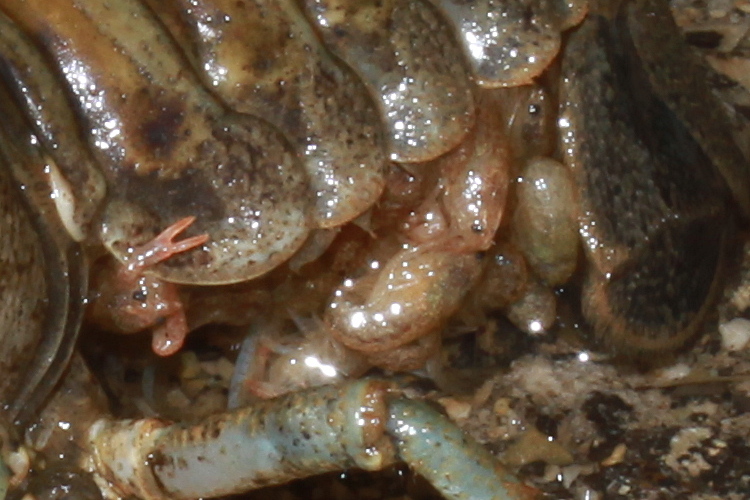
A closer look. It is a mother carrying her babies (instars) under her tail.
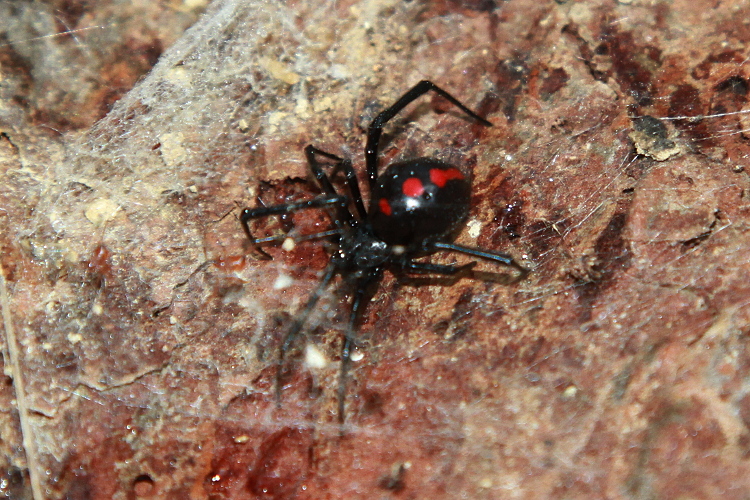
A Black Widow spider that Ryan found. August 2018.
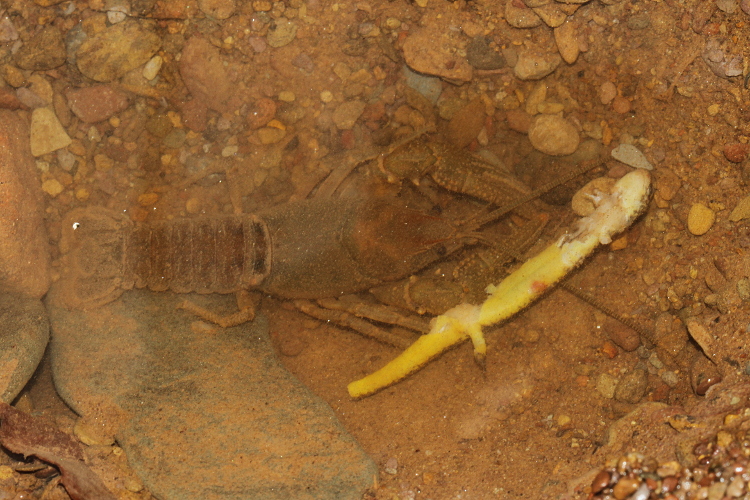
A crayfish and a dead Southern Two-lined Salamander
(Eurycea cirrigera),
almost as found under a rock. When initially seen, the crayfish was
holding the salamander with its claw. March 2019.
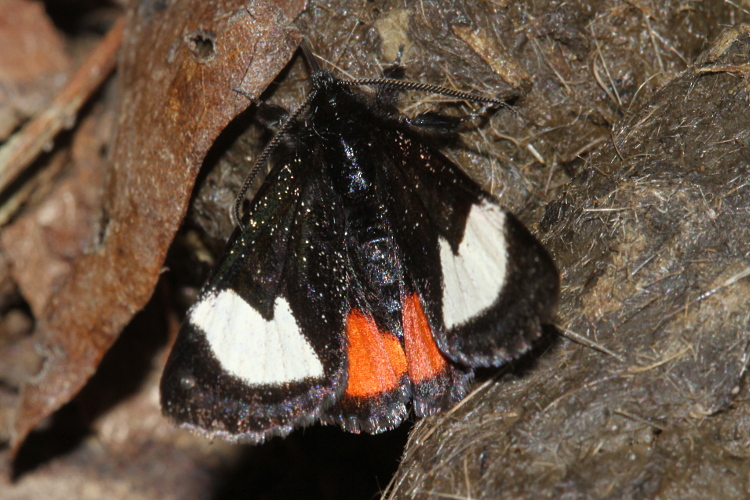
A Grapevine Epimenis (Psychomorpha epimenis), as found on a scat.
April 2019.
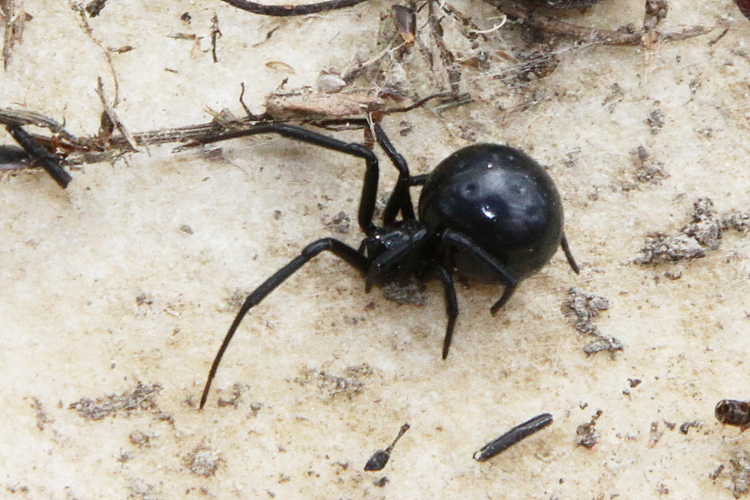
A Black Widow spider found on April 20. This is the first time I have
ever seen one in Ohio in the spring time. They are usually a late summer
or fall thing for me. April 2019.
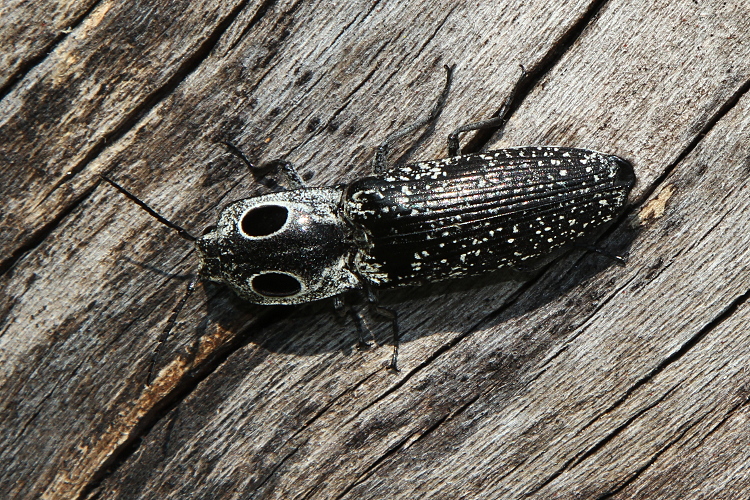
An Eastern Eyed Click Beetle (Alaus oculatus), nearly 2 inches long.
I did a little reading about these. It turns out their larvae feed on
other beetle larvae and grubs. June 2019.
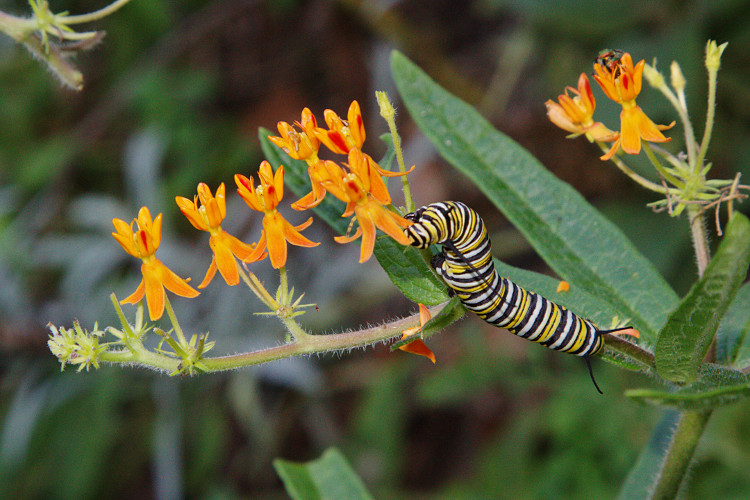
A monarch caterpillar going to town on our milkweed. August 2019.
Well, that's what I've got for now.
Return to Carl's photos.











































